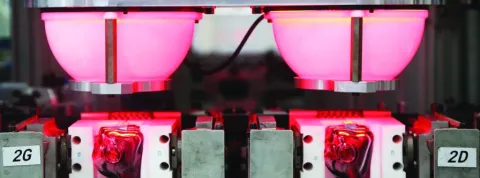
Recycling: A True Sustainable Trend in the Luxury Industry
Sustainability, recycling, eco-design...The trend today is to lose nothing and transform everything, for our own good and that of our planet. And it is of course a responsible attitude adopted by the biggest luxury houses!
An ethical question? It is also a question of style that opens the way to a new modernity. The beginnings of this idea of recycling were in the 90s, when Martin Margiela was making luxury goods from found objects. Then, in the early 2000s, John Galliano at Dior launched his Clochards collection made from newspaper clothes, and in 2009, Stefano Pilati at Saint Laurent created a New Vintage collection, limited edition pieces made from fabrics from the company's archives. Finally, in 2010, Hermès is also committed to recycling by launching its Petit H line, which reuses scrap materials from its workshops to create accessories and small objects.
Vintage collections or reuse of materials, reuse of unsold stock or remastering of archive items Fashion is an eternal restart, recycling in fashion is very trendy! And all brands are thinking about it. There are even today some very beautiful young eco-responsible luxury brands that are fully committed and whose circular economy is a philosophy. Designer Valentine Gauthier uses recycled wool and is exploring the possibility of making cactus fibre jeans and mushroom leather boots. A committed designer, Marine Serre, after working at Balenciaga, Dior and Margiela, has created a Green line collection with pieces made from 100% recycled materials. Her message of awareness for the climate emergency is very strong, her collections are conceived as transformation projects, in which she works on the deconstruction and reconstruction of second hand clothes. Another important designer is Gaëlle Constantini, for whom "Wearing the past to the present to embellish the future", and who, for example, has made blouses from the lining of the Senate curtains.
As for the major luxury groups, these issues are taken very seriously, and they have equipped themselves with specific tools to reduce their carbon footprint, reduce their water consumption and think about maintaining biodiversity. The LVMH group has created an index (IPE) that rates environmental criteria and CO2 emissions. Alexandre Capelli, Director of Sustainable Development at LVMH, explains that "Each new product must be better than the one it replaces". Guerlain has thus lightened the packaging of its Imperial Orchid skincare product. Dior favors the refill principle, which is highly developed in Japan, and plans to offer a refill on all its skincare products and half of its fragrances this year. The primary packaging may remain very sophisticated and even heavy, but it will no longer be disposable.
In the L'Oréal group, reusability is also a reality. Armani, Saint-Laurent and Lancôme will offer this concept starting this year. "The consumer will keep the primary packaging and incorporate refills that are much less costly in terms of natural resources," emphasizes Philippe Thuvien, L'Oréal's director of packaging and development.
All luxury brands are moving towards lighter packaging, the integration of recycled materials, the use of processes that generate less energy...and are thinking about the concept of life cycle.
As Thibaut de La Rivière, Director of Sup de Luxe, points out, "The brands were right to grasp the stakes of this trend today, because the law on unsold goods will be applied in France from 2021".
Find out more about our dedicated program to Fashion industry : MS.c Fashion & Luxury Business
